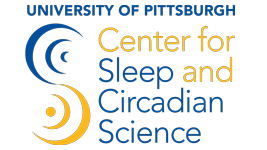Session 2 Circadian Rhythms: Cells to Populations
Moderator: Colleen McClung, PhD
From Steven Carlson to Everyone: 10:14 AM (answered during discussion)
Follow up to Dr. Roecklein: Is midsleep point appropriate to use as a daily measure of sleep timing in a within-person design?
From Steven Carlson to Everyone: 10:30 AM (answered during discussion)
For Dr. Roecklein: What is the difference between cosinor and non-parametric circadian methods for actigraphy? What factors should researchers consider when choosing one over another?
From Amy Hartman to Everyone: 10:32 AM (answered during discussion)
To piggy back on Steven’s question for Dr. Roecklein: Do researchers use both types of measurement (cosinor and non-parametric) together or always choose one depending on the research question?
From Misol Kwon to Everyone: 10:14 AM (answered during discussion)
This question is directed to Dr. McClung. Attention-deficit/hyperactivity disorder (ADHD) is believed to be a result of interrupted passages of dopamine or norepinephrine. And increasingly, we see researches that suggest the linkage between ADHD and variety of sleep problems. We also recognize that ADHD is linked with higher rates of substance abuse. In your lab, do you also look into ADHD in young mice? If so, how does their circadian rhythm differ from the healthy young mice. My thoughts are around that sleep and circadian rhythm disruption in mice perhaps can be studied as a mediating role between ADHD and substance abuse….?
From Logan, Ryan Wellington to Everyone: 10:24 AM
https://journals.physiology.org/doi/full/10.1152/ajpregu.2000.278.2.R373
From Chin Moi Chow to Everyone: 10:31 AM (answered during discussion)
I have a question for Dr Bokai. What is the significance of the newly discovered ultradian rhythm? Is it a physiological rhythm, behavioural one or other?
From Bokai to Everyone: 10:36 AM
To Chow, at this point, most of 12h oscillations are observed at molecular level, gene expression, protein and metabolites, the only physiological output is in RER (respiratory exchange ratio) via CLAMS system. We argue that the 12h-clock accommodates demands for increased gene expression/processing at the two biological ‘rush hours’ (dawn and dusk) by elevating the global traffic capacity of the central dogma information flow. The circadian clock, on the other hand, dictates the particular genes/gene products processed at each rush hour (thus acting as the cargo). An everyday metaphor would be the fluctuating daily traffic on the highway: the 12h rhythm is analogous to the oscillatory operating capacity of the highway, which increases during the two rush hours (by opening the HOV lane, for example), whereas the function of the circadian clock is likened to determining which cars goes on the highway
From Chin Moi Chow to Everyone: 10:38 AM
Can you please send through the reference on mid-sleep and standard deviation as a indicator of sleep regularity?
From Marissa Bowman to Everyone: 10:39 AM
Hi Dr. Chow, I can send you some articles on sleep midpoint and SD of sleep midpoint.
From Amy Hartman to Everyone: 10:39 AM
Marissa, can you share with everyone? Sounds great!
From Marissa Bowman to Everyone: 10:44 AM
These articles all use sleep midpoint for a measuring of timing and SD of sleep midpoint for regularity:
- Bowman, MA, Brindle, RC, Joffe, H, et al. Multidimensional sleep health is not cross-sectionally or longitudinally associated with adiposity in the Study of Women’s Health Across the Nation. Sleep Health. In press.
- Brindle, RC, Cribbet, MR, Samuelsson, LB, et al. The relationship between childhood trauma and poor sleep health in adulthood. Psychosom Med. 2018;80(2):200-207. PMID: 29215455
- Brindle, RC, Yu, L, Buysse, DJ, Hall, MH. Empirical derivation of cutoff values for the sleep health metric and its relationship to cardiometabolic morbidity: results from the Midlife in the United States (MIDUS) study. Sleep. 2019;42(9):zsz116. PMID: 31083710
- Dong, L, Martinez, AJ, Buysse, DJ, & Harvey, AG. A composite measure of sleep health predicts concurrent mental and physical health outcomes in adolescents prone to eveningness. Sleep Health. 2019;5(2):166-174. PMID: 30928117
From Christopher King to Everyone: 10:53 AM
Thanks, Marissa for the citations about regularity as part of sleep health. I was wondering, as for the 2019 adolescent paper, how strong are the recommendations for 1 hour cut-off for regularity?
From Marissa Bowman to Everyone: 10:57 AM
This is answer to Dr. Kings Question. From my read of the literature, the 1 hour cut off for regularity seems to come from evidence that the circadian system does a poor job of adjusting to daylight savings time: Kantermann, T., Juda, M., Merrow, M., & Roenneberg, T. (2007). The human circadian clock’s seasonal adjustment is disrupted by daylight saving time. Current Biology, 17(22), 1996-2000.
From Hamilton, Jessica L to Everyone: 10:58 AM
Thanks Tica and Marissa! Regularity can also be used continuously if you did not want to use cut-off scores (or dichotomized variables).
From Marissa Bowman to Everyone: 11:00 AM
You’re welcome, Dr King! I think your point is actually more specifically for adolescents – It would be interesting to consider whether they are better or worse off in terms of health with adjustments to their circadian rhythms. Tica has a paper on social jet lag and inflammation with adolescents, and they used a 2 hour cut off: Hall, M. H., Lee, L., & Matthews, K. A. (2015). Sleep duration during the school week is associated with C-reactive protein risk groups in healthy adolescents. Sleep medicine, 16(1), 73-78.


